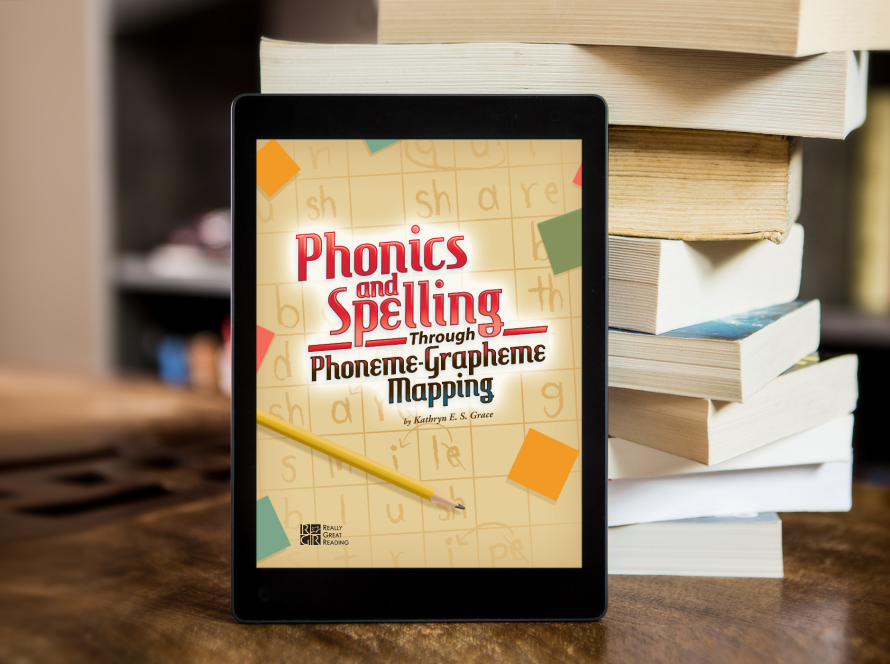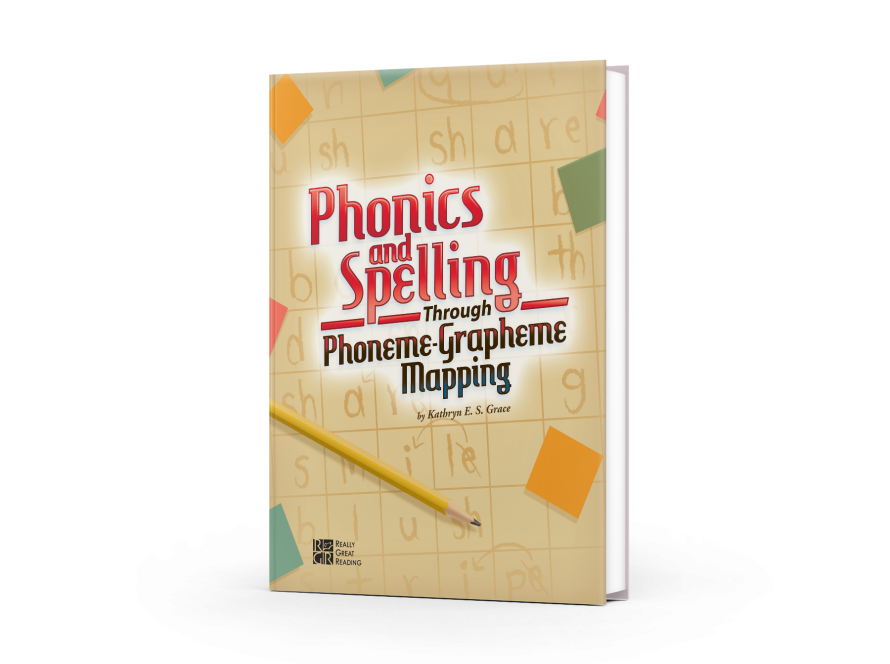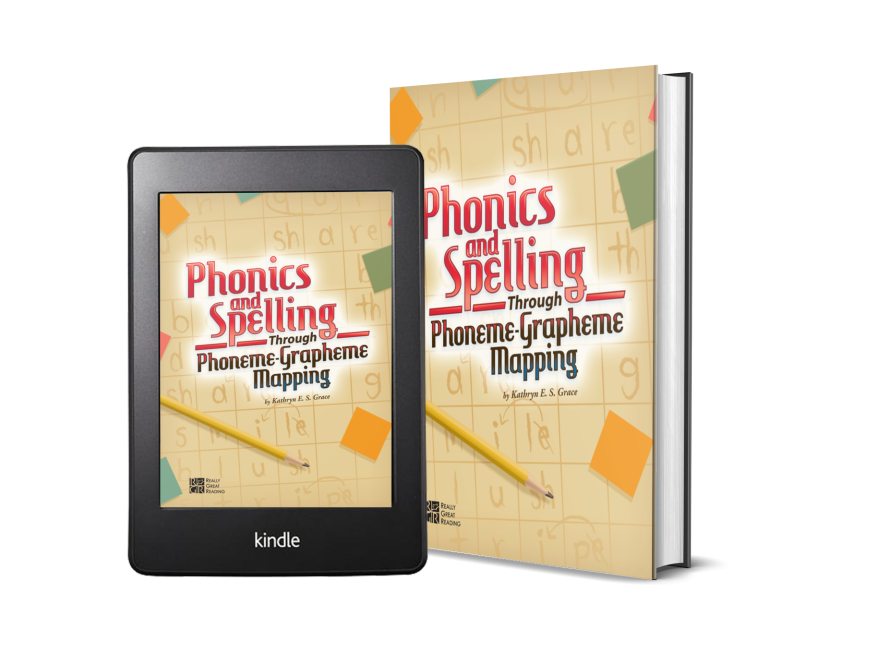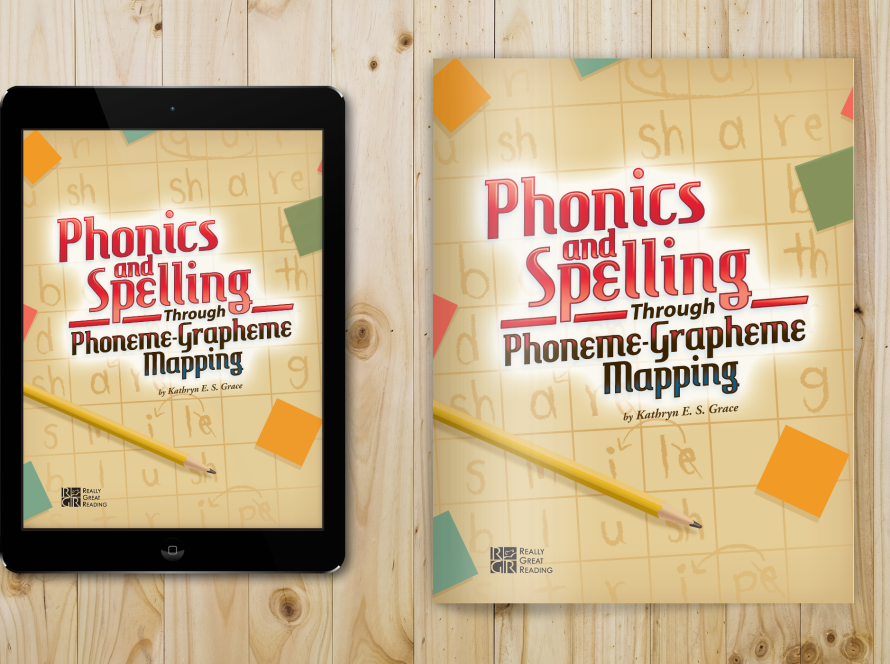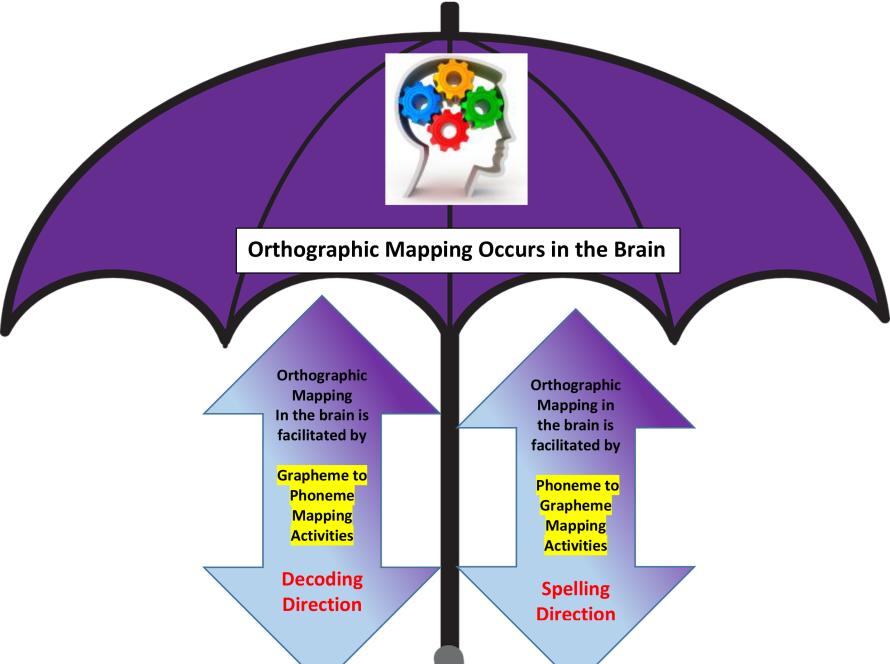Welcome to Phoneme-Grapheme Mapping.com
A website dedicated to the development of automaticity and fluency with reading and spelling for all ages.
This site features ideas from professional developer, consultant, and author Kathryn Grace. Ms. Grace is best known as the originator of Phoneme-Grapheme Mapping (PGM) which she created in 1983 while teaching in her Vermont classroom. Her Phoneme Grapheme mapping process has influenced countless literacy professionals and has been instrumental in helping students of all ages better understand the alphabetic principle, the knowledge that there are systematic and predictable relationships between written letters (graphemes) and spoken sounds (phonemes).
The sequential, systematic, and explicit lessons in her acclaimed and influential book, Phonics and Spelling Through Phoneme-Grapheme Mapping, are a direct outcome of her experience teaching young students and incorporate best practice based on empirical research. Its multisensory elements help to bridge the brain’s phonological and orthographic processors to strengthen learning and recall.


Visit our Store
Phonics and Spelling through Phoneme-Grapheme Mapping is a critically acclaimed work that contains sequential, systematic, and explicit lessons which help students understand the reality that the number of sounds (phonemes) they hear in a word may be different from the number of letters that represent those sounds.
Phonics and Spelling through Phoneme-Grapheme Mapping is a critically acclaimed work that contains sequential, systematic, and explicit lessons which help students understand the reality that the number of sounds (phonemes) they hear in a word may be different from the number of letters that represent those sounds.

Hello, Kathryn! I wanted to reach out to you to let you know what an amazing impact your book is having on the teachers, students, and families at my school. Your guidance in PGM – which none of us learned in our teacher prep programs – has provided us with an opportunity to support our families in ways we had not imagined. Our school is highly diverse and has 45% EL and 50% poverty. Our reading scores have decreased on a yearly basis through the pandemic and we were feeling hopeless. Through LETRS training and the use of your book for guidance, we developed some Home Spelling sheets that provide families with the support they need to move away from sight word memorization and into deeper understanding of how spelling works at the sound level. By creating spelling lists for home that are written as sound boxes, we are seeing students grow in their enjoyment and understanding when practicing spelling at home. To be clear, spelling instruction happens at school with the teachers, but your resource has provided the teachers with the confidence to guide parents too. We use the spelling lists provided by our curriculum, but instead of just a list of words, we provide the words written in sound boxes and highlight the spelling concept by sound that is the focus for that week. Parents are reporting that they are tapping sounds and engaging in positive spelling interactions with their children rather than experiencing tantrums and tears. We realize that the research may not fully support the use of sound boxes in this way, but the experience we have with families suggests that the research may not have accounted for children with instructional holes and families who may not have mastery of English. Anyway, I was working over the weekend, like all teachers do, and thought I’d encourage you. Thank you for your work and for sharing it through your book.
Lisa Silmser

I have been looking forward to this publication for a long time. In the LETRS professional development manuals, I presented the ideas around which Phonics and Spelling Through Phoneme-Grapheme Mapping was developed, hoping that every teacher would soon be able to obtain this outstanding instructional tool. This program, fully classroom tested and theoretically sound, exploits a fundamental fact about the relationship between speech and print: the 44 speech sounds (phonemes) in English are represented by graphemes, not letters. Graphemes are letters and letter combinations that correspond to individual speech sounds and that are used in largely predictable patterns and sequences. Kathryn Grace’s innovative and effective approach highlights phoneme-grapheme relationships, depicting for students the internal details of both spoken words and written words and the patterns by which print represents speech. This program embodies the true meaning of “the alphabetic principle,” which is much discussed and seldom taught in such an engaging, logical, organized, and complete fashion. With this program, in the regular classroom or the intervention group, students will learn the fundamentals of word structure for both reading and spelling. It’s powerful; it’s fun. Thank you, Kathryn, for giving us this work.


